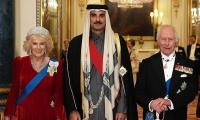In January 1990, tensions in Kashmir allowed the BJP to capitalize on it to fan its extremist agenda. Immediately after coming to power, the VP Singh government introduced the 62nd Amendment and the Scheduled Caste and Scheduled Tribes Act of 1989 to prevent atrocities and discrimination against marginalized groups in India.
Since the Janata Dal had won elections using caste discrimination as a major issue in northern India, VP Singh decided to implement the recommendations of the Mandal Commission, which had suggested in 1980 that the government reserve a fixed quota of all jobs in the public sector for the members of the disadvantaged ‘other backward classes’ (OBC). The upper-caste youth did not like it, and protests erupted mostly in urban areas. This all facilitated the emergence of more caste-based politics in India with regional issues and leaders gaining strength, especially in Bihar, Madhya Pradesh, Rajasthan, and UP.
In August 1991, VP Singh removed his deputy prime minister Devi Lal for criticizing the government on the implementation of the Mandal Commission report. This caused much dissatisfaction within the ruling National Front government. Meanwhile the BJP moved its agenda forward with the Ram Janmabhoomi (birthplace) agitation. It became a rallying cry for several Hindu organizations, and extremism gained momentum. Two leaders who played a significant role in this were Lal Kishna Advani and Pramod Mahajan who led a chariot march (‘rath yatra’) across India’s northern states.
They converted a bus to look like a Hindu mythical chariot. Here the new chief minister of Bihar, Lalu Prasad Yadav arrested the BJP leaders on charges of fomenting communal tensions. In UP, chief minister Mulayam Singh Yadav ordered the police to fire openly upon BJP militants as riots broke out in Ayodhya in October 1990. The BJP withdrew support from the VP Singh government in Delhi. The two chief ministers and prime minister Singh stood for secularism and saved Babri Masjid at the cost of power in New Delhi.
VP Singh lost the vote of confidence and had to resign in Nov 1990, after just 11 months in power. Another leader Chandrashekhar seized the moment. He left the Janata Dal with several of his supporters such as Devi Lal, Deve Gowda, and Maneka Gandhi to form a new Samajwadi Janata Party or Janata Party (Socialist). Shekhar had 64 MPs but Rajiv Gandhi of the Congress party agreed to support him, making Shekhar the prime minister of a minority government. The 11-month rule of VP Singh witnessed the launch of two polarizing trends that would shape the politics of India in the decades to come.
One, the politics of social justice based on caste which followed the implementation of the Mandal Commission report; two, the politics of religion based on Hindu nationalism which resulted in the desecration of Babri Masjid in 1992 and the subsequent communal riots. Chandrashekhar was prime minister for seven month but this period was instrumental in changing the path of India towards an acute economic crisis. After four months in power – when it was time to present the budget in March 1991 – the Congress withdrew its support and Chandrashekhar had to resign, only to continue as caretaker prime minister.
The economic crisis was not new and some experts were already preparing documents on liberalization in India, but Chandrashekhar did not have the required mandate to approve them. In May 1991, India witnessed another tragic assassination when during the election campaign some Sri Lankan Tamil militants targeted and killed Rajiv in a suicide bomb attack. Rajiv as prime minister had sent Indian troops to help the Sri Lankan government in its military action against Tamil militants in northern Sri Lanka. The assassination of Rajiv plunged India into deep mourning and postponed general elections until mid-June 1991.
During the Chandrashekhar government, the economic crisis intensified and called for some drastic measures. Essentially, it was a balance-of-payments crisis that led to a severe recession. India required loans from international financial institutions, but they demanded the fulfilment of certain structural adjustment programmes. As usual, the IMF and the World Bank demanded deregulations of industries, privatization of state-owned enterprises, and reduction of trade barriers. For the previous 40 years or so, India had followed an overall protectionist policy, with some attempts at liberalization in 1966 and the early 1980s.
The import-substitution policy had produced mixed results in the past decades having good trade relations with the socialist bloc, especially with the Soviet Union. By 1991, the socialist bloc had already unravelled and the USSR itself was on its death bed. Industrialization that had taken place in India under state monitoring with government interventions in labour and financial markets was not working anymore. Excessive business regulation and central planning that the Congress government had pursued since independence needed an overhaul. Bureaucratic meddling, elaborate licences and regulations in the name of self-sufficiency had failed.
This system of ‘dirigisme’ – a market economy coupled with central planning and state intervention – was restraining economic growth as the state had the ownership of big and major industries with little competition. This model did not aim to generate profit but to serve developmental and social objectives; all good on paper but hard to achieve on ground. With an average of 4.0 per cent annual growth of the Indian economy from 1950s to 1980s, per-capita income averaged just 1.3 per cent. By 1991, India still had a fixed exchange rate system with the Indian rupee pegged to the value of a basket of currencies of major trading partners.
The balance-of-payments problem India had been facing since the mid-1980s spiralled out of control by 1991. The government was close to default as its central bank had refused new credit. Foreign exchange reserves reduced to the point of having just a couple of weeks’ worth of imports. The Indian trade balance was also in deficit as imports had been swelling since 1985, while the government was running on a huge fiscal deficit too by 1991. The Iraq-Kuwait conflict also exacerbated the problems of the Indian economy as India depended on crude oil from the Gulf.
The internal debt of the government accumulated to around 50 per cent of the GDP. When the Chandrashekhar government was unable to pass the budget, India’s bond rating went tumbling down. Now, the government of India found itself with just one option and that was to pledge a significant portion of its gold reserves to the Bank of England and the Union Bank of Switzerland as collateral to secure foreign exchange as India’s debt obligations demanded. The Reserve Bank of India airlifted 47 tons of gold to London and 20 tons to Zurich in the last week of May 1991, immediately after the assassination of Rajiv Gandhi.
The operation was a secret one and drew criticism later on, when it became public. India also had to accept the conditions that the IMF and the World Bank imposed including structural reforms. This is how the Chandrashekhar government managed to prevent default. This gave temporary relief to the Indian economy, and soon elections brought the Indian National Congress to power once again. An interesting chapter of the second non-Congress government came to an end.
Concluded
The writer holds a PhD from the University of Birmingham, UK. He tweets @NaazirMahmood and can be reached at:
mnazir1964@yahoo.co.uk
Political instability has long plagued Pakistan, disrupting governance and economic planning
He was prolific writer and always expressed his views with clarity and firmness
In recent weeks, banks have searched for new borrowers, willing to take fresh debt at below-market rates
Pakistan’s constitution guarantees right to peaceful assembly – a cornerstone of democracy
Developing National WASH Account in Pakistan relies on range of stakeholders at federal, provincial, and district levels
Beauty of arbitration is that no conflicted party needs to sit at negotiating table and enter into dialogue with other...







